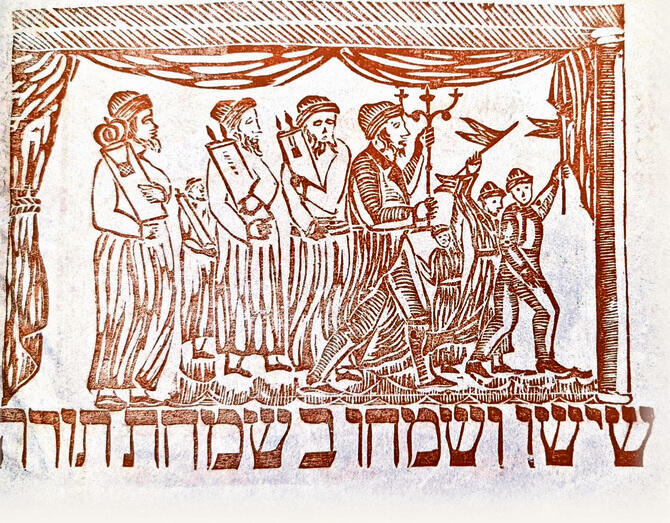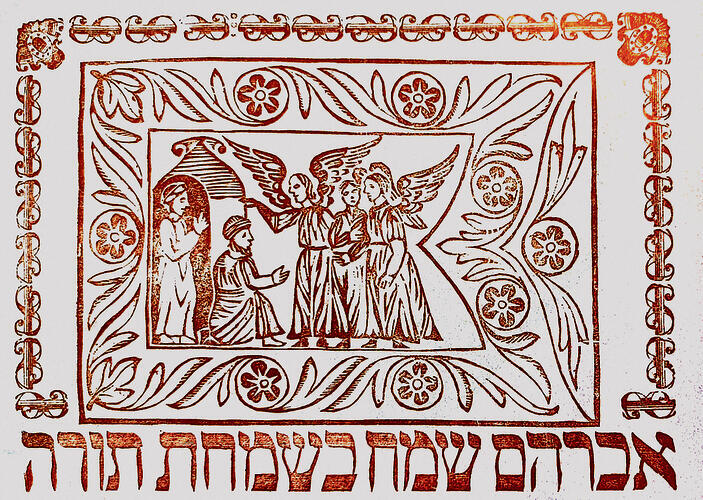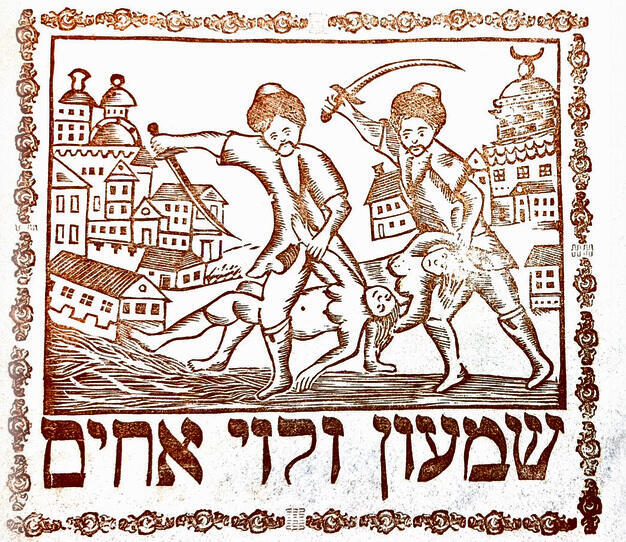Getting your Trinity Audio player ready...
The National Library of Israel recently received a donation of three unique flags printed in Lithuania in 1864, depicting scenes of Jews celebrating Simchat Torah – a Jewish holiday marking the end of the annual cycle of public Torah reading.
More stories:
The flags were proposed and printed for customers at a Jewish printing house in Vilnius about 160 years ago. Since most of the flags were created on low quality paper and discarded after the holiday, the ones that were preserved well are extremely rare.
Each flag depicts a biblical story or a historical event. Among the events depicted are Abraham's meeting with the angels, the tribes of Israel carrying flags, David playing the harp, and the figures of Simeon and Levi in the city of Shechem.
The tradition of using flags on Simchat Torah is relatively ancient, and various testimonies suggest that it has been known for over 400 years, since the start of the 17th century. This tradition emerged as a way to make the holiday appeal to local children.
Over the years, Simchat Torah flags were made from thin paper which quickly deteriorated. Therefore, the flags donated to the National Library serve as a rare testimony to the holiday’s flags that were in use many years ago.
This unique donation was made by William Gross, who possesses one of the largest and most significant private collections of Judaica and Jewish visual culture.
"Initially, most of the flags were printed in black and white or, in this case, on blue paper. However, toward the end of the 19th century, you can find more and more flags with vivid, eye-catching colors," Ariel Viterbo, from the National Library’s Archives Department, said. "The themes on the flags’ paintings have changed over the years, from distinct biblical motifs like those appearing on these flags, to later flags where themes include modern events and children."
Dr. Chaim Neria, the curator of the National Library’s Judaica collection, added: "The creation of these flags has been considered inexpensive folk art over the years. Some of the flags were undoubtedly created by the children themselves, using simple means and on low-quality paper, which were then discarded after the holiday.”
“This is why, despite the tradition’s age, there are no flags today that date back to the first half of the 19th century. This is why acquiring a collection of the first printed Simchat Torah flags is important, including the examples of flags that were offered to children in Vilnius in 1864. It's fascinating to look at the pictures and think about the world of Jewish children 160 years ago," he added.
According to Neria, with the rise of the Zionist movement, Herzl’s figure was also incorporated into the Simchat Torah flags. Later, images from the lives of the Jewish settlers were added, and over time more and more reactions to contemporary events and figures were created.
Additionally, illustrators of children's books in Israel during the 1940s and 1950s influenced the design of Simchat Torah flags. "We’re familiar with such flags featuring characters from television series, often produced abroad, as children identified with their heroes. Additionally, there are political flags issued by religious parties in Israel during election times," he explained.




